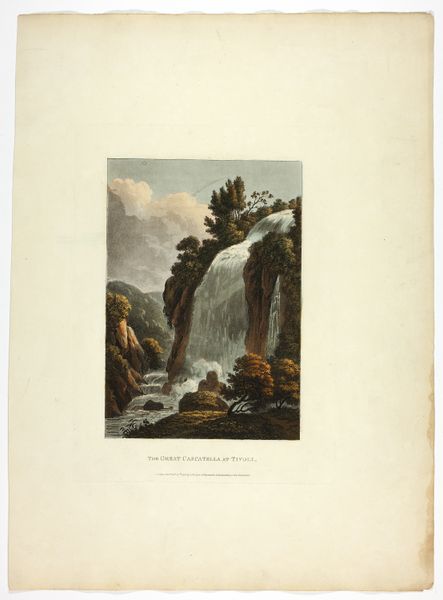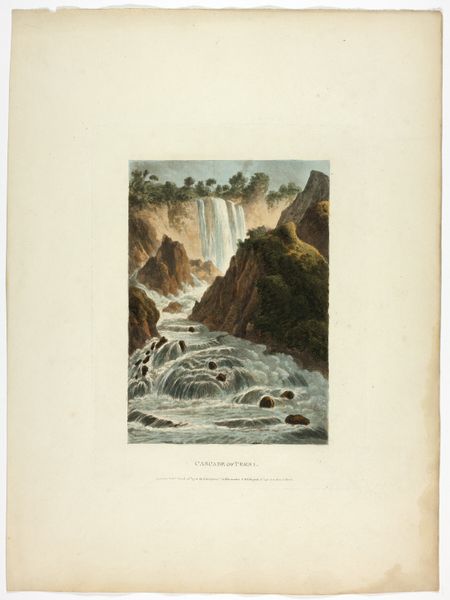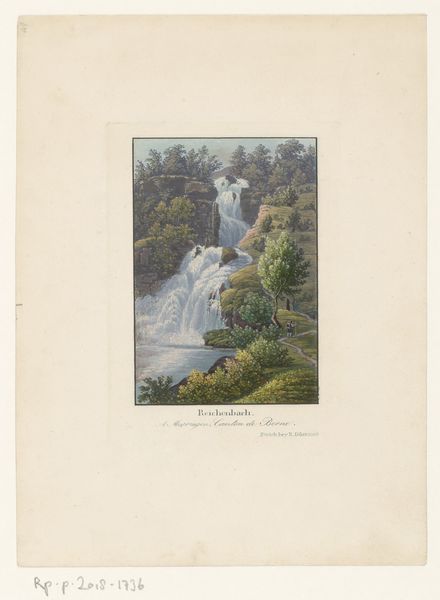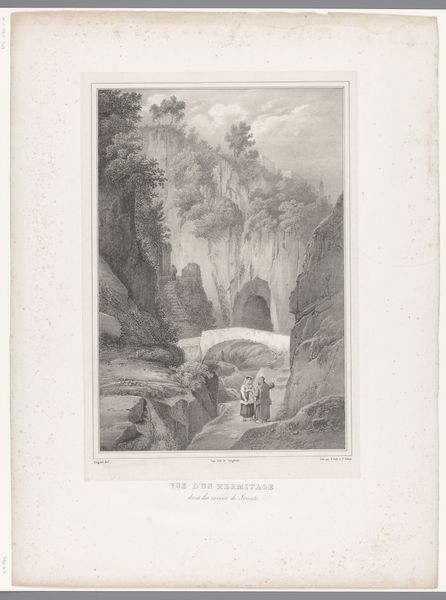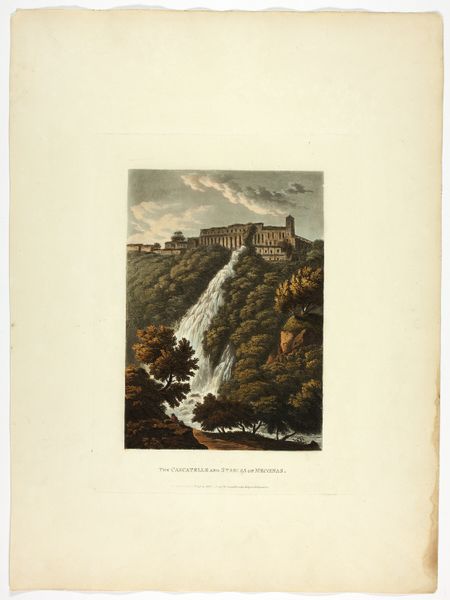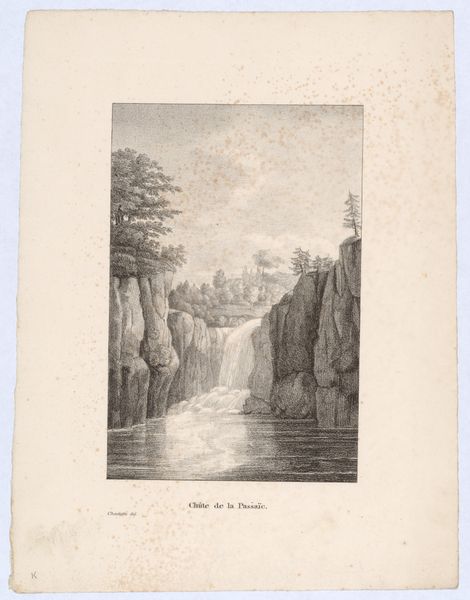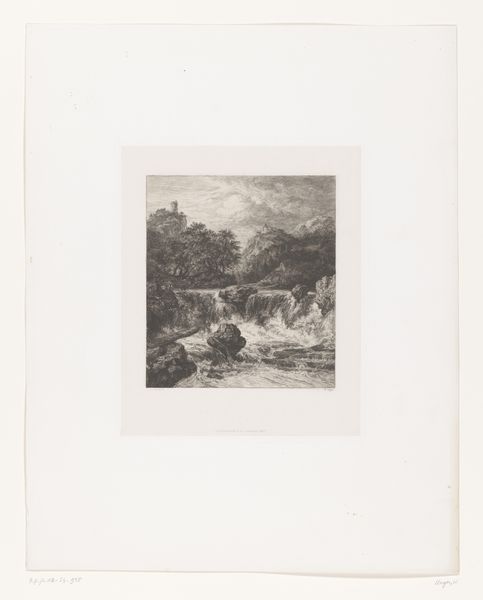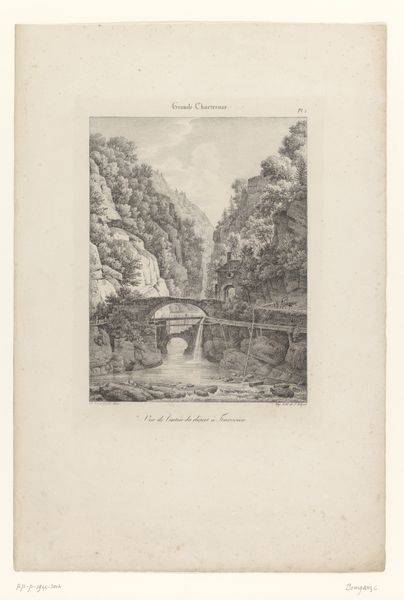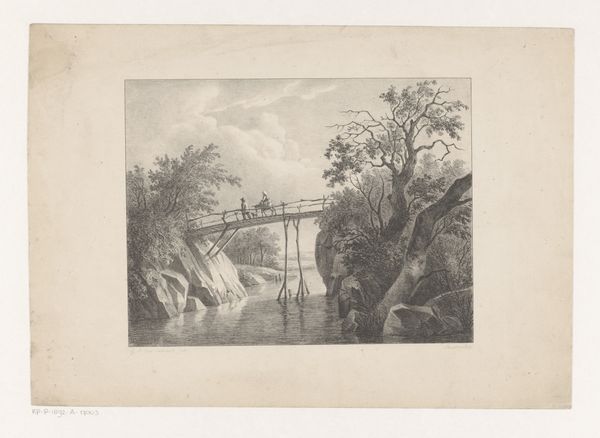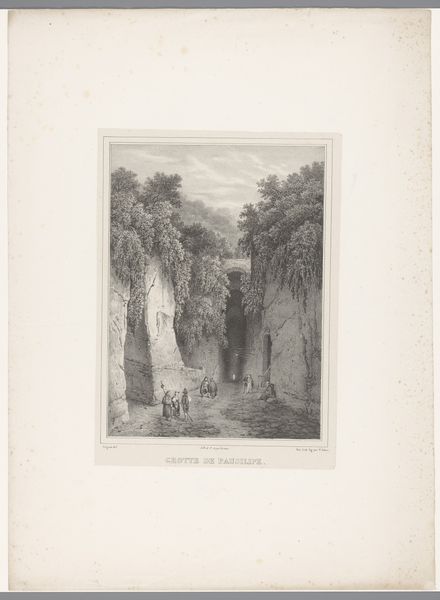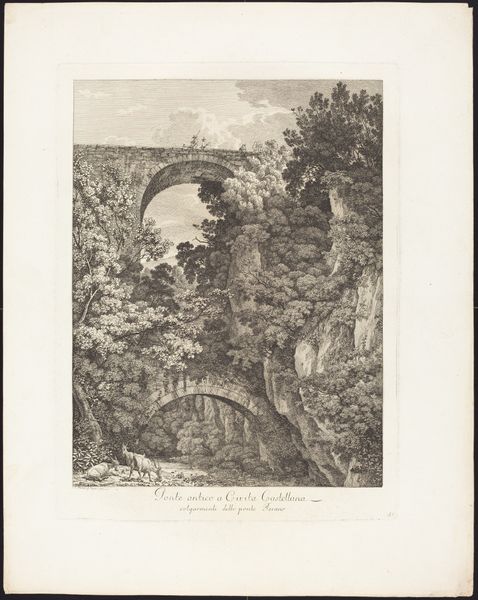
Cascade of Tivoli, plate thirty-nine from the Ruins of Rome Possibly 1798
0:00
0:00
drawing, print, etching, paper, watercolor
#
drawing
# print
#
etching
#
landscape
#
paper
#
watercolor
#
coloured pencil
#
history-painting
Dimensions: 448 × 330 mm (sheet)
Copyright: Public Domain
This print, "Cascade of Tivoli," was made by M. Dubourg in the early 19th century, using a technique called aquatint. This was a popular printmaking method at the time, because it allowed for the creation of broad tonal areas, mimicking the effect of watercolor washes. If you look closely, you can see the subtle gradations of color used to depict the rocks, foliage, and cascading water. The aquatint process involves etching a metal plate and then using powdered resin to create a textured surface. When the plate is inked and printed, it produces a soft, granular effect. The method enabled Dubourg to capture the dramatic play of light and shadow in the scene, as well as the atmospheric perspective that suggests the distance between the foreground and the distant town. Prints like this were often made for a growing middle class, eager to experience the beauty of the Italian landscape from the comfort of their own homes. So, while this image may seem like a straightforward depiction of nature, it's also a product of its time, reflecting the rise of tourism and the commodification of picturesque views.
Comments
No comments
Be the first to comment and join the conversation on the ultimate creative platform.
